Very strong and shallow M6.8 earthquake hits eastern Turkey
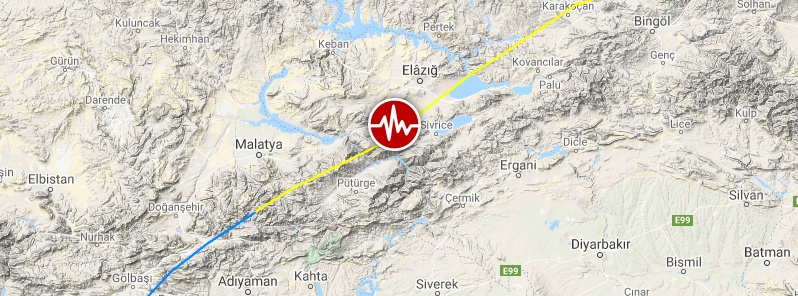
A strong and shallow earthquake registered by the EMSC as M6.8 hit eastern Turkey at 17:55 UTC (20:55 local time) on January 24, 2020. The agency is reporting a depth of 15 km (9.3 miles). The USGS is reporting M6.7 at a depth of 10 km. This earthquake can have a medium humanitarian impact based on the magnitude and the affected population and their vulnerability.
The epicenter was located 5.1 km (3.1 miles) ENE of Doganyol (population 6 332), 35.3 km (29.1 miles) SE of Baskil (population 15 922), 38.3 km (23.7 miles) NW of Cemik (population 20 975), 40.1 km (24.8 miles) SSW of Elazig (population 298 004) and 59 km (36.6 miles) W of Eregani (population 52 684), Turkey.
There are 2 580 000 people living within 100 km (6.2 miles).
29 000 people are estimated to have felt severe shaking, 390 000 very strong, 1 248 000 strong and 2 061 000 moderate, according to the USGS.
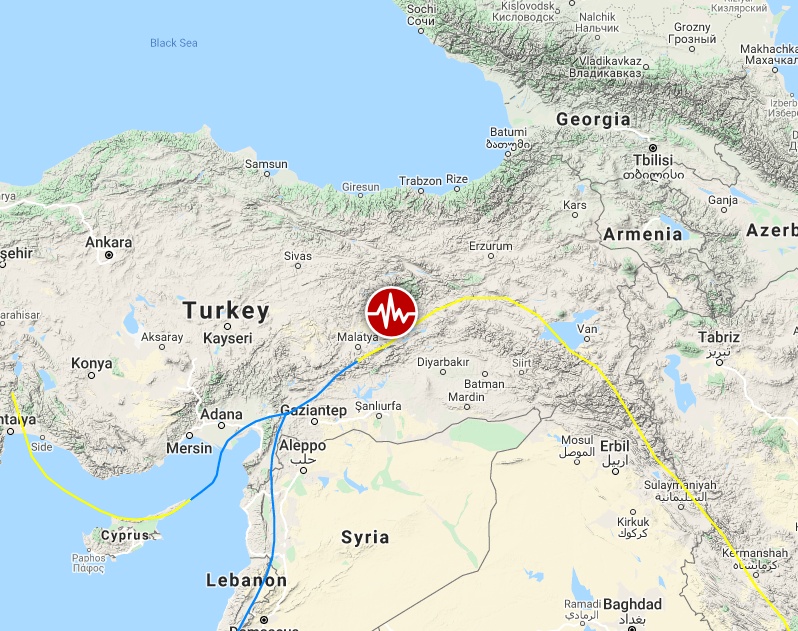
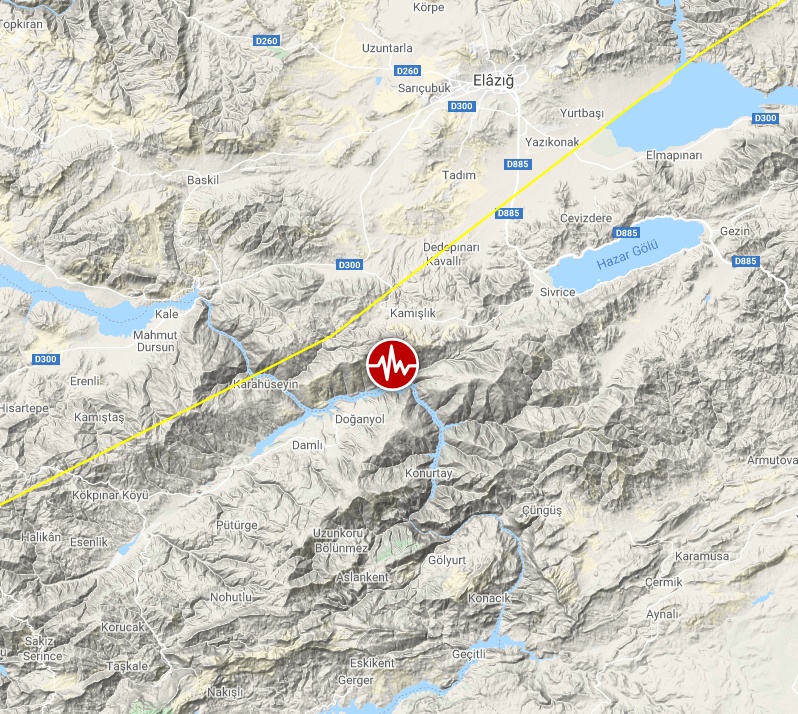
Image credit: Google, TW/SAM
The USGS issued a yellow alert for shaking-related fatalities and orange alert was issued for economic losses. Significant damage is likely and the disaster is potentially widespread. Estimated economic losses are less than 1% of GDP of Turkey. Past events with this alert level have required a regional or national level response.
Overall, the population in this region resides in structures that are a mix of vulnerable and earthquake-resistant construction. The predominant vulnerable building types are unreinforced brick masonry and adobe block construction.
Recent earthquakes in this area have caused secondary hazards such as landslides that might have contributed to losses.
Temperatures in the region dipped to -8 °C (17.6 °F) overnight.
According to Turkey's Disaster and Emergency Management Authority (AFAD), the quake lasted 40 seconds. At least 678 aftershocks have been felt in the region, with the strongest registered at M5.4.
Initial reports suggest 76 buildings were demolished, 42 damaged and 425 with minor damages.
At least 35 people have been killed, Turkey's vice president said on Sunday, January 26.
Updates:
Eastern Turkey M6.8 earthquake updates
Estimated population exposure to earthquake shaking
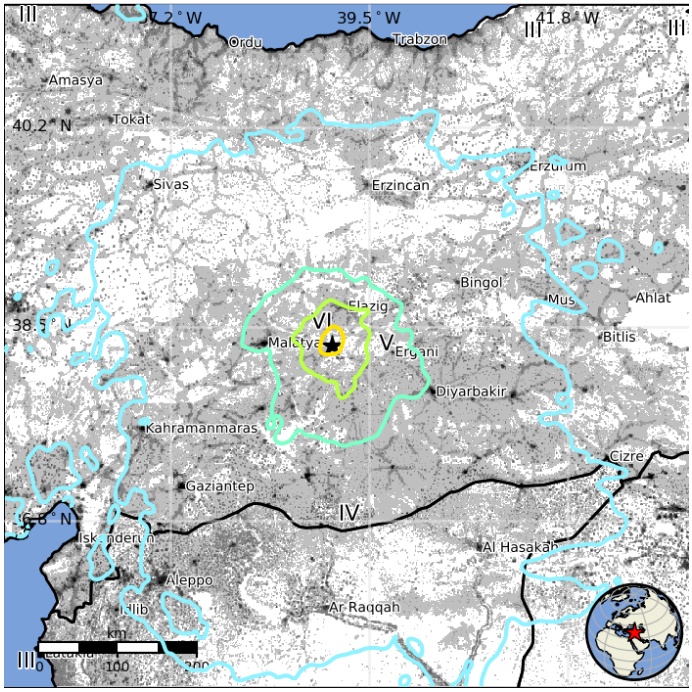
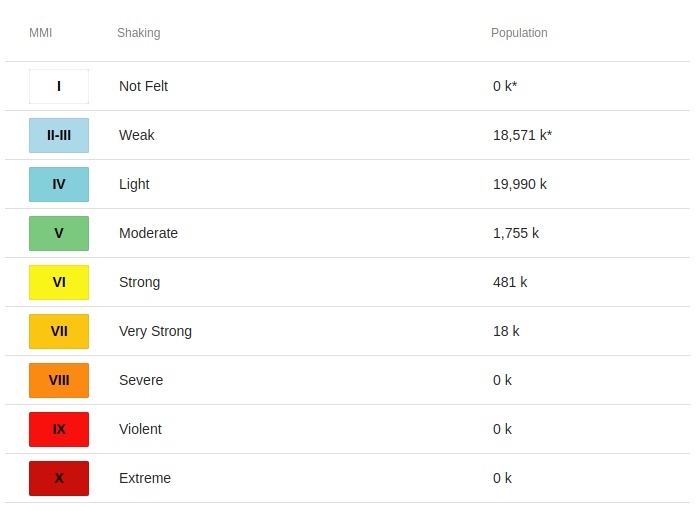
Selected cities exposed
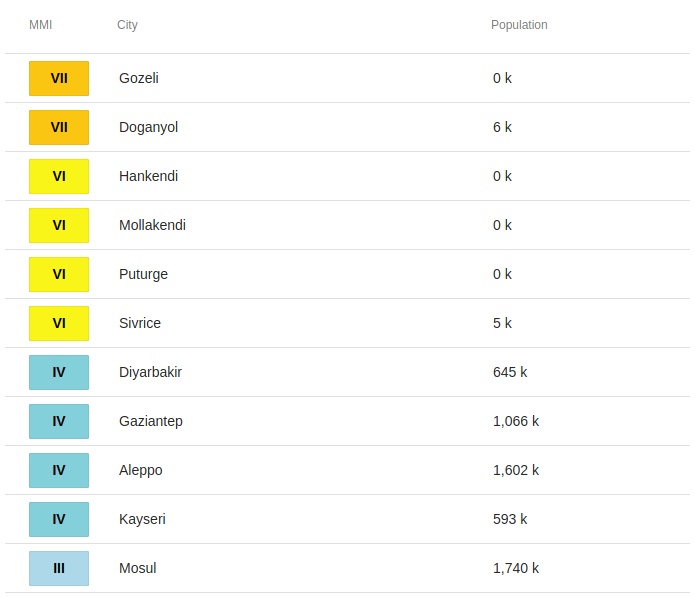
Regional seismicity
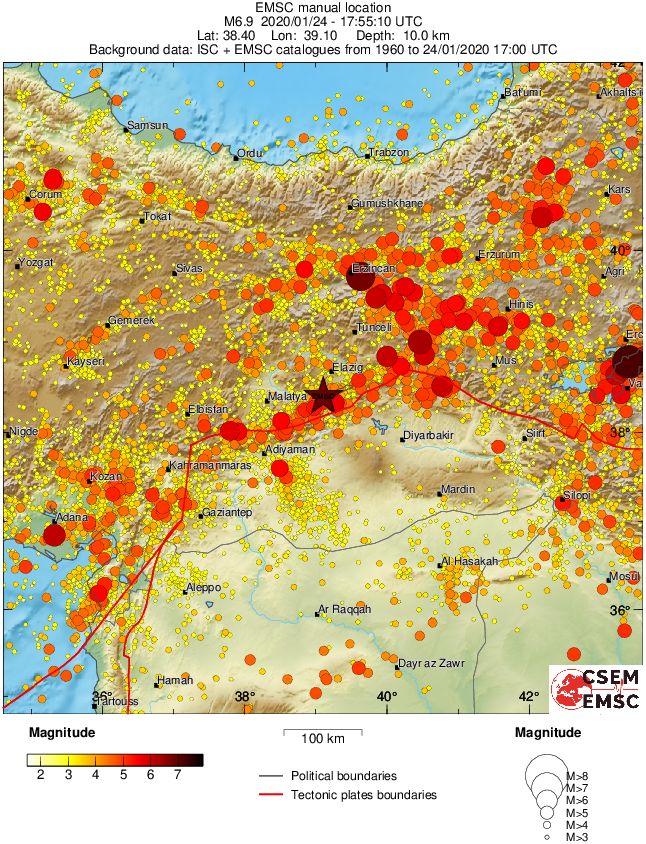
Featured image credit: Google, TW/SAM

Further to Jamal comment above – while Turkey has a perpetual high risk of large, damage producing earthquakes both this year and every year, the risk of another and possibly larger earthquake in the area is actually increased by the action of this Earthquake. Stress forces inside the crust are released in earthquakes – in the immediate vicinity, but stress actually builds up to higher levels at the extremities of the ruptured fault line increasing the stress and the likelihood of further ruptures along ‘strike’ – in this case, further along the South Anatolian Fault (SAF) system. This could happen in either direction along the SAF, with stress possibly being transferred into the North Anatolian Fault system (NAF) – having a much greater impact due to the larger population centres that reside close to the NAF as opposed to the less dense populations close to the SAF.
Turkey is at a very high risk of being hit, this year by far stronger earthquake than this one